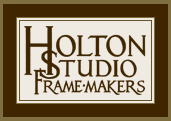Big news in the business world this week is Jobs stepping down from Apple. One story about this that played on the radio caught my attention, as it echoed a point I tried to make in my post-financial collapse essay for Arts and Crafts Homes Magazine called "Real Wealth: The Value of Art and Craft In a Debased Economy," which was that if manufacturing, along with agriculture, forms the foundation of our economy, then the bedrock of that foundation is handcraft. Jobs's story provides a perfect example. Even as high up the economic ladder and the management scale as Jobs was, even as technologically sophisticated and abstract as his work is, there is a real basis for what he did in handcraft. Here's how he himself explained it in his 2005 Stanford University commencement address:
Reed College at that time [when he attended in 1972] offered perhaps the best calligraphy instruction in the country. Throughout the campus every poster, every label on every drawer, was beautifully hand calligraphed. Because I had dropped out and didn't have to take the normal classes, I decided to take a calligraphy class to learn how to do this. I learned about serif and san serif typefaces, about varying the amount of space between different letter combinations, about what makes great typography great. It was beautiful, historical, artistically subtle in a way that science can't capture, and I found it fascinating.It's notable that what opened his eyes to handcraft wasn't reading books or attending lectures about it, but the actual presence of it in the buildings that framed his education. As drenched in technology as college campuses and students are, it would be nice if this lesson were reviewed and all computer- and machine-generated signage were replaced with calligraphed and carved signs. After all, no less a technological visionary than Steve Jobs makes the case that such seemingly small matters comprise the bedrock of our technological advancement.
None of this had even a hope of any practical application in my life. But ten years later, when we were designing the first Macintosh computer, it all came back to me. And we designed it all into the Mac. It was the first computer with beautiful typography. If I had never dropped in on that single course in college, the Mac would have never had multiple typefaces or proportionally spaced fonts. And since Windows just copied the Mac, it's likely that no personal computer would have them.




I found this part of Steve Job's speech very interesting.
ReplyDelete